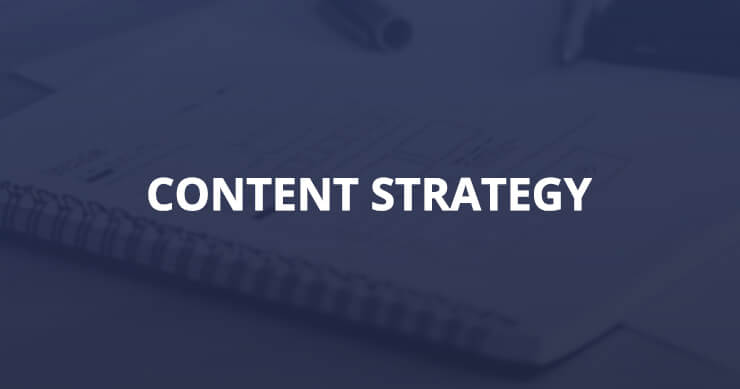 We. Are. Back! I hope you are, too. I just grabbed a handful of M&Ms from Dana Lookadoo and some dark chocolate Hershey kisses from Jonah Stein. My mother will be happy to know that my chocolate diet at SMX continues. Sugar highs, FTW! Muahaha!
We. Are. Back! I hope you are, too. I just grabbed a handful of M&Ms from Dana Lookadoo and some dark chocolate Hershey kisses from Jonah Stein. My mother will be happy to know that my chocolate diet at SMX continues. Sugar highs, FTW! Muahaha!
The very-sick Vanessa Fox is back moderating speakers Eric Enge, Dave Lloyd, Craig Macdonald, and Marshall Simmonds. She said that Q&A moderator Adam Audette is going to rap after the speakers finish their presentations. Ooo! That should be fun. For now, let’s just get into the presentations, eh?
[The ‘eh’ is for Dawn. We’re missing her at SMX West. Come visit, Dawn!]
Eric Enge is up first. He plugs his book and holds it up to show the audience. Aw, it’s like show and tell. I wish I had something to share with everyone. This recap is all you get.
Typical SEO Issues:
- Assessing site crawlability
- titles and headings
- dealing with duplicate content
- anchor text
- review redirects.
Some link building examples
- Getting your CEO Interviewed: Great link building tactic. When your CEO gets interviewed, people read the interview and they’ll link to your Web site.
- Contracts: Requiring a link back to your site in the contract. [Really? People do this? Eeesh.]
- Public Relations
Picking an e-commerce or content management system
There are tons of problems that occur based on your CMS. Typical problems include lack of control in specifying:
- Titles
- Heading tags
- Meta Descriptions
- Image Alt Tags
- Anchor Text
- Breadcrumbs
- URL structure of site
Eric provides a case study for a site he worked on that had a lot of problems. There were issues with session IDs. Every page was trying to rank for the same term because they had the same Title tag on every page. They did a Forecast for them. The original site had 50K uniques a day. The new site they wanted to launch would drop that down to <5,000 a day. They ended up delaying the rollout of the site by 9 months and paid the CMS vendor six figures to put in very basic features. Oy.
- Platforms for GOOD SEO: Drupal, Joomla, Mambo, Pixelsilk, SEO Toaster, WordPress, etc. All of these can be set up and run so they’re good for SEO. Some require substantial configuration but they give you a good starting place.
- Platforms for BAD SEO: Open Text, ATG, IBM WebSphere, Broadvision, Escalate
Make sure you have an SEO professional review your proposed CMS before you start. Use a proxy optimization product such as GravityStream.
Scalable Content Development
Eric talks a bit about mass content options and the way that some brands get around it. For example, Amazon uses a lot of user generated content, but you need A LOT of traffic for that. As a brand who is NOT Amazon, you’ll need to assemble a writing and editing team. You need to write decent content. He mentions using some low source writing resources like off shore labor, students, and semi-retired people. I cringe. A lot.
He advises creating a pyramid setup for content. You want to put your best writers on top quality pages and the less skilled writers on the pages that don’t matter much. That makes sense.
Next up is Dave Lloyd.
He’s playing with rocks and putting them into a glass. I lost the analogy because I twittered I was cold and someone from behind me threw their leather jacket over my shoulders. It could have been creepy but I went with it. Search people are just super friendly.
Stack the Right Rocks First
- Rock 1: Know the algorithm. He mentions SEOmoz and its Search Engine Ranking Factors. Jennita is here and ‘woots’. Heh.
- Rock 2: Strategy First, Tactics Second. Figure out WHO and WHY first. Then HOW. And then the WHAT, WHEN and WHERE.
- Rock 3: SEO Ambassadors Have them.
- Rock 4: Define expected results. What are your Key Performance Indicators? Cost Per Lead, Value Per Visitor, Search Traffic, etc?
- Rock 5: Think of SEO in a larger system: 94 percent of all failures is a result of the system, not the people. [That quote, no pun intended, ROCKS]
- Rock 6: Evaluate SEO maturity: There are five levels… which I missed because he went too fast. Sorry.
- Rock 7: Know project management basics
- Rock 8: Manage bottlenecks: If you can automate your bottleneck, you can be much more efficient. They have a keyword database that’s available to everyone in the company.
- Rock 9: Opportunity costs: if you do task X, you can’t do task Y (at the same time). There is nothing so useless as doing efficiently what should not be done at all – Peter Drucker
- Rock 10: Master the core skills. Search marketing, Technical, Content, Interpersonal, and Consulting.
Holy Jesus, he’s flipping through these so quickly that I can’t get a word in. I’m sorry. And suddenly it’s over. It was all just a dream.
Next up is Marshall Simmonds.
Learning SEO is easy, implementing it is hard. He talks about the challenges that the New York Times faces. There are 22 million documents, they have a paid subscription wall, they have technical barriers, they have a limited CMS, lots of URL parameters, their content moves/expires, etc.
Examples Of The Fail
Depending on the timeliness of the story, there’s a window of opportunity to build that link equity. When the plane crashed into the Hudson, the window of opportunity was two hours long. You had two hours to do KW research, content creation, and get everything else done and up so the engines could index it. They missed that opportunity because they didn’t go after the right keywords. They lost any ability to rank for it. The solution to that would have been to use keyword research tools like WordTracker, Keyword Discovery, Google Trends, etc. You need to hit it right the first time. They constantly reinforce how to do keyword research and how to use terms that people are actually searching for. The Editorial teams don’t get that because they want it to be right. But what’s “right” isn’t what people are searching for.
Create a checklist to tell people what to do and create checklists for specific to each department. He talks about The Checklist Manifesto.
Moving Content
301’s have to be built into the cost-structure of an organization because you can’t take those down. Make sure that you’re protecting your structure forever. They were slow to adopt link journalism. They didn’t link out to other people. About.com learned this early in the game. You want to be a hub for information. The engines want to be able to crawl your topic and find relevant information on top of that.
Measuring/Maintaining
Measuring SEO progress. Identifying potential problems. Targeting new opportunities. They had to bring in new tools because Google Analytics doesn’t scale to what they need.
Mistakes To Avoid
- Under communicating
- Maintain 301s forever
- Implementing the changes
- Excessive expectations: timeframes, growth
- Lack of editorial oversight
Craig Macdonald is up next.
Economics of SEO
- 10 percent Keyword Discovery
- 30 percent Site Audits
- 45 percent Site Changes
- 15 percent Monitoring
He didn’t include training because it would have made the numbers dumb.
Governance Model – Center of Excellence
SEO isn’t like medium (okay, I don’t think he said medium but… that’s all I got). You don’t just go buy SEO. It requires a team effort across IT, marketing, SEO specialists, content management systems, etc. You have to have a center of excellence to incorporate quality concepts into the organization. The center of excellence should set criteria for:
- Best practices to follow
- Technology startup
- Agency approvals
- Purchasing synergies
- Education and training
- Metrics
Metrics for Executive Reporting
- Make SEO look like media channels
- Augment with market share or share of clicks
- Stay away from channel specific jargon
Social media drives SEO. The query stream of the consumer will drive SEO dynamically and automatically.
As promised, Adam Audette raps at the end of the session… it’s really good…that he still has a day job. Not the rapping. We heart you, Adam. And we’re done. Back in a bit with advice on to fit social media into your life. I think that’s what’s next. Maybe the next session is about bunnies. The Outspoken Bunny!


